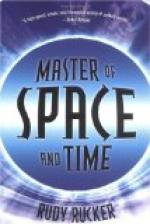It was originally planned to place the wires underground, as this was thought necessary or their protection. After running the line some five miles out from Baltimore it was found that this method of installing the line was to be a failure. The insulation was not adequate, and the line could not be operated to the first relay station. A large portion of the $30,000 voted by Congress had been spent and the line was still far from completion. Disaster seemed imminent. Smith lost all faith in the enterprise, demanded most of the remaining money under a contract he had taken to lay the line, and a quarrel broke out between him and Morse which further jeopardized the undertaking.
Morse and such of his lieutenants as remained faithful in this hour of trial, after a long consultation, decided to string the wire on poles. The method of attaching the wire to the poles was yet to be determined. They finally decided to simply bore a hole through each pole near the top and push the wire through it. Stringing the wire in such fashion was no small task, but it was finally accomplished. It was later found necessary to insulate the wire with bottle necks where it passed through the poles. On May 23, 1844, the line was complete. Remembering his promise to Miss Ellsworth, Morse called upon her next morning to give him the first message. She chose, “What hath God wrought?” and early on the morning of the 24th Morse sat at the transmitter in the Supreme Court room in the Capitol and telegraphed these immortal words to Vail at Baltimore. The message was received without difficulty and repeated back to Morse at Washington. The magnetic telegraph was a reality.
Still the general public remained unconvinced. As in the case of Wheatstone’s needle telegraph a dramatic incident was needed to demonstrate the utility of this new servant. Fortunately for Morse, the telegraph’s opportunity came quickly. The Democratic national convention was in session at Baltimore. After an exciting struggle they dropped Van Buren, then President, and nominated James K. Polk. Silas Wright was named for the Vice-Presidency. At that time Mr. Wright was in Washington. Hearing of the nomination, Alfred Vail telegraphed it to Morse in Washington. Morse communicated with Wright, who stated that he could not accept the honor. The telegraph was ready to carry his message declining the nomination, and within a very few minutes Vail had presented it to the convention at Baltimore, to the intense surprise of the delegates there assembled. They refused to believe that Wright had been communicated with, and sent a committee to Washington to see Wright and make inquiries. They found that the message was genuine, and the utility of the telegraph had been strikingly established.
VII
DEVELOPMENT OF THE TELEGRAPH SYSTEM
The Magnetic Telegraph Company—The
Western Union—Crossing the
Continent—The Improvements
of Alfred Vail—Honors Awarded to
Morse—Duplex Telegraphy—Edison’s
Improvements.




